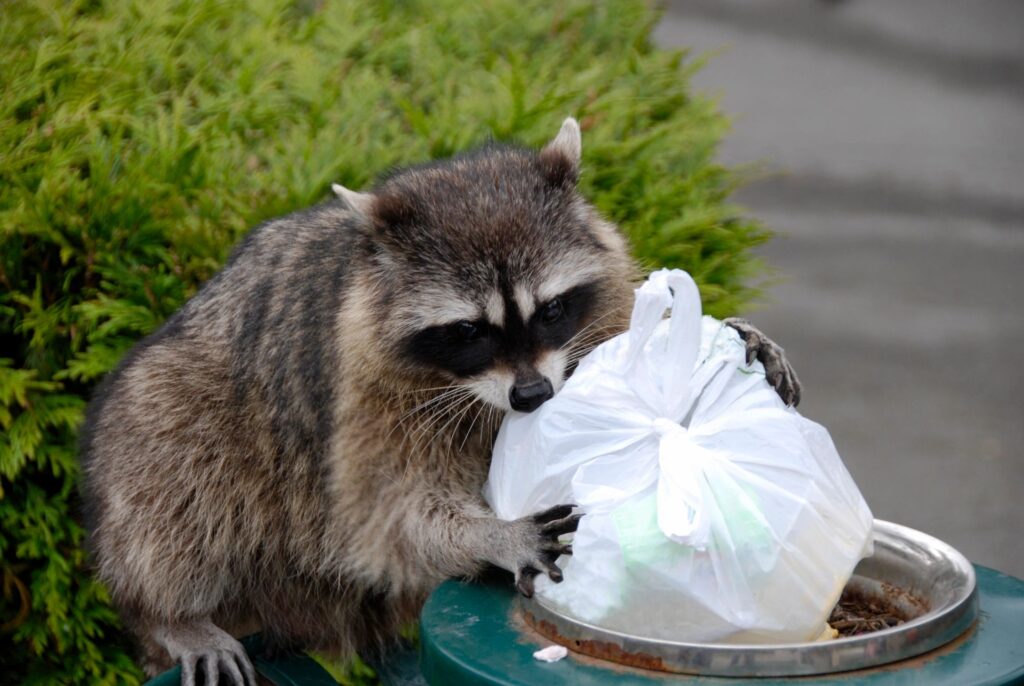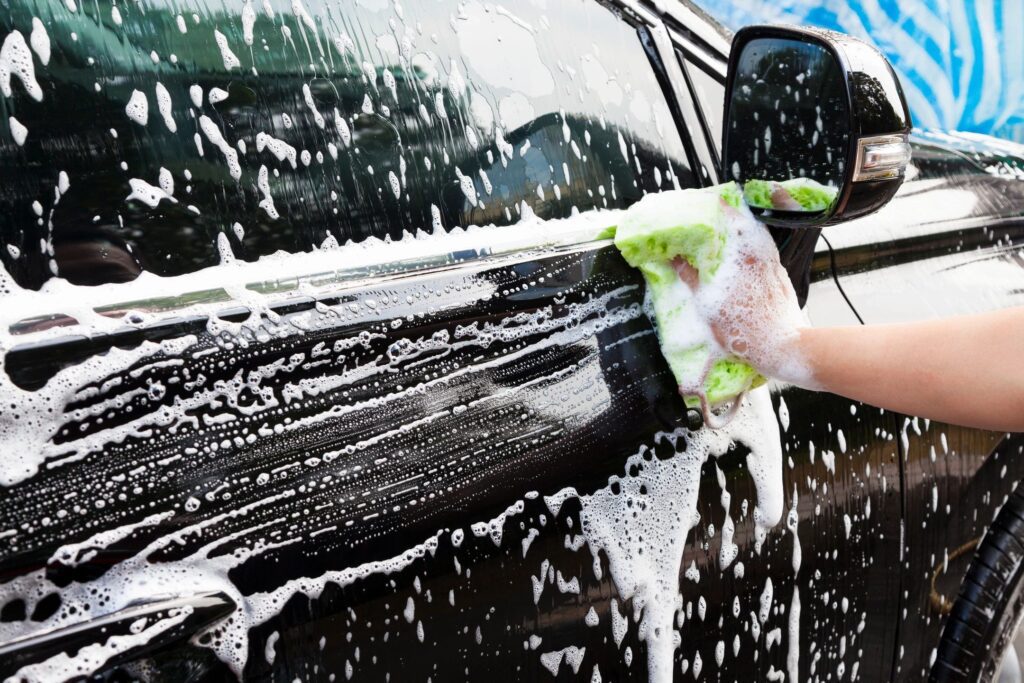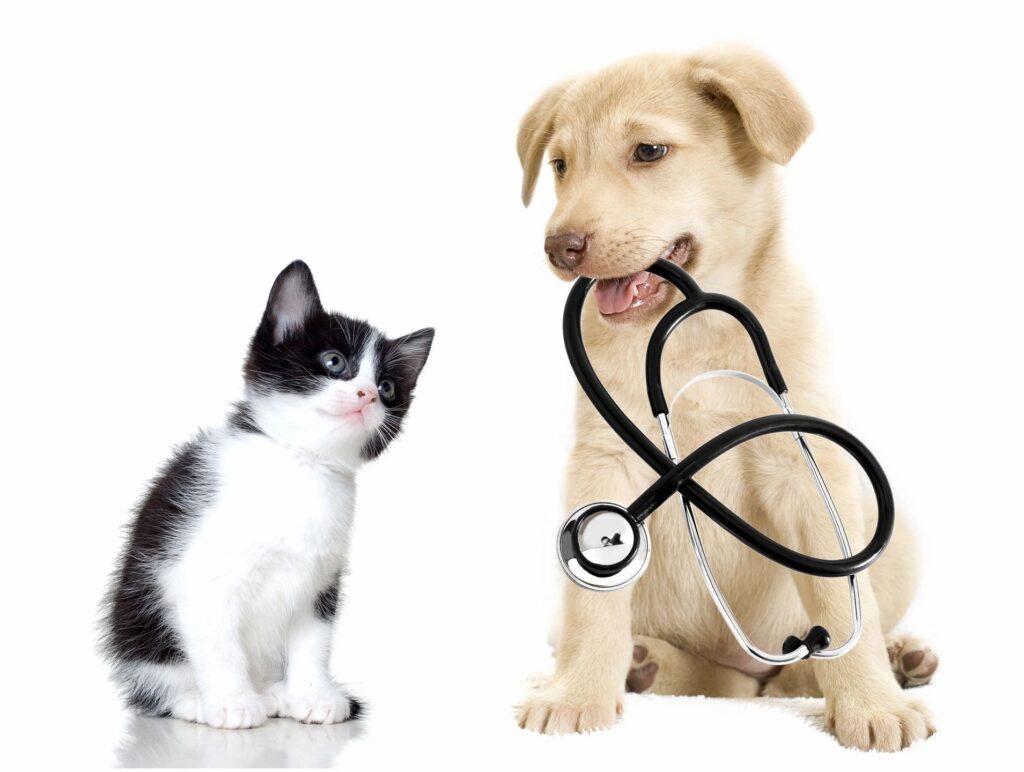“If It Smells, It Sells”
Serious journalists complain that “if it bleeds, it leads” when their substantive, public-serving stories are bumped off the front page and not used as “teasers” on TV news programs in favor of tales that have more blood, tragedy, and shock value. The editors, who are responsible for keeping readership and media outlet profits up, understand human nature and know that such titillating stories are much more likely to catch the viewer’s attention.
Similarly, modern manufacturers of a whole array of products from garbage bags to car waxes to construction materials to bubblegum know something about human nature too: “if it smells, it sells.” A product advertised as having “fragrance” is much more likely to be purchased than one without added scent.
What manufacturers do not disclose is these fragrances are made up of synthetic chemicals (not natural ingredients) and harm human health and the environment, including the quality of our air and water.
A Proliferation of “Gratuitous” Chemical Fragrances
Psychologists warn about “gratuitous violence” in modern entertainment: i.e., depictions of violent or disturbing acts that are not necessary to tell the story. Exposures to such scenes leave an unhealthy imprint on the psyche of viewers, especially young ones.
Similarly, chemical fragrances that have no purpose other than to increase profits are increasingly being added to a whole host of products. These gratuitous synthetic chemicals are added simply because they are believed to be “desirable” (from the Latin “gratus” for “pleasing or agreeable”) to the olfactory glands of consumers.
Manufacturers and businesses are aware of the close link between the human sense of smell, memories and motivations to engage in certain behaviors (including buying), the control centers of which are clustered together in the brain’s limbic system (also called “the emotional brain.”)[i] For example, encountering a smell that brings up a pleasant memory of a favorite food when one was a child evokes a positive emotional response. The smell of fresh cooked French fries emanating from fast food restaurants is known to motivate people driving by to stop and order up a hot batch.
Most people believe they are unaffected by advertising for such products—that they can tune them out. Research demonstrates otherwise.
Ads for products claiming they are “cleaner,” “fresher,” “healthier” or “sexier” affect buyer choice. Art Markman, Ph.D., a cognitive scientist at the University of Texas, explains:
“The problem is that we allow advertisers to have access to our mental world. They have paid for the opportunity to slip information to us about what feels good. That information ultimately affects the way we make choices, whether we know it or not.”[ii]
So, ads for scented products are depicted along with other things we feel good about—like fresh flowers, cute puppies, blue skies, and sunshine—to make us feel good about the product, too.[iii]
While merchandisers claim their fragranced products are better and healthier than unscented ones, they do not divulge that fragrance chemicals often are added to “mask” the smell of other hazardous chemicals used to make their products, causing them to be less healthy not more.
Many businesses now know what specific smells are most likely to entice shoppers to stay in their place of business longer, buy more, come back often, and buy certain products again (a marketing strategy called “branding”).
For this reason, many hotel chains, restaurants, and other places of public accommodations infuse the air in their buildings with their “signature scents.” An increasing number of health care offices also diffuse fragrances and “essential oils” into their facility to create a positive association with being cared for by someone, have a calming effect on patients during their visit and to increase the chance they will return there for care.
Some justify these actions as smart business strategies. I consider them an unethical form of chemical brainwashing and business promotion harmful to human health and our environment.
The “You Must Be Joking!” Scented Product List
With no government agency regulating the products, the situation has gotten so out of hand that the very existence of some fragranced products strains credulity. Below I offer a list of some of the most outrageous, unhealthy products that I call the “You Must Be Joking!” products.
But the health impacts of the chemicals that are being added to such products and that we all are being exposed to are anything but funny.
- Scented air filters: Whose cockamamie idea was this? Consumers purchase air filters (for their car, HVAC system, office, home) to help remove harmful substances from the air including allergens, dust, smoke, bacteria, viruses, mold spores, etc. to protect their health. Adding fragrance to air filters primarily defeats that purpose. It reduces one set of health risks while it introduces another set far more likely to cause long-term illnesses.
The tiny particles of chemicals in all fragrances are lung irritants (which can cause asthma attacks and worsen other chronic lung conditions like emphysema and COPD); damage the nervous system; disrupt hormones; cause reproductive issues, genetic damage, developmental abnormalities (including gender variations); cause cancer and autism; aggravate ADHD and cause dementia; worsen obesity; provoke migraines; and cause chronic sinus infections, allergic reactions and rashes that won’t heal.
Chronic exposure to air “filtered” through fragranced systems can provoke the development of reactive airway disease, fragrance sensitivities and chemical sensitivities in individuals who are not otherwise sick,[iv] and worsen the conditions in many who already are. - Scented gum and lip balms: Get twice the chemical hit from one product! Most gums and lip balms have artificial flavors made of synthetic chemicals. What exactly does adding scent to these products do for the consumer other than increase the risk of harm? Does the gum taste better? (That is unlikely since exposure to chemicals in fragrances reduces one’s sense of taste.) Does it make the balm feel better to the lips? Does it make the person wearing it more attractive to others? (The opposite is true—most people do not like the smell of other people’s scented products, including their highly scented gums and lip balms, which can provoke symptoms in others.)
Even worse than people wearing scented products on their bodies is ingesting them! Think how many chemicals chewers of scented gum are swallowing and scented balm wearers are eating in their lifetime. They are getting twice the chemical exposure from just one product.
Remember what we learned about chewing tobacco and snuff, which have many of the same chemicals found in scented products, and what they were doing to the tender linings of one’s mouth, especially in the young: e.g., cancers of the mouth, throat, and gums. - Scented tampons: Speaking of tender linings! As a long-time sexual health educator and history teacher, I will resist digressing into a discussion on lingering historical Western cultural and religious attitudes about women: i.e., that females are associated with the body (not the mind or spirit) and therefore are base, filthy, and evil. Now the derogatory messages are less overt but no less damaging to women’s beliefs about themselves and their bodies. I will not question why scented tampons exist at all (after all, scent sells) or how it is that pre-menopausal women can be persuaded that their natural feminine smells, if they are even noticeable at all, are something that must be masked in some way.
However, I do contend that the production and sale of scented tampons is more offensive than any odor that might emit from a woman’s interior regions while she is menstruating. Like with so many other personal hygiene issues (for males and females alike), keeping clean is sufficient to smell good. Perfuming one’s insides with toxic products that can cause vaginal, cervical, and other cancers is completely unnecessary and unhealthy. Women should avoid any such products laced with any added chemicals for fragrance or “increased absorbency.” The gain is simply not worth the health risk.
- Scented trash bags: Garbage stinks, we all know that—does it need to be toxic, too? Have you tried to buy unscented trash bags lately? (I buy mine on-line.[1]) Even “natural” food stores and co-ops sell only the scented kind. Why? Because the manufacturers of these products are in stiff competition for business—and they know that scent sells, even when it makes no “sense” whatsoever.
Research by Glad showed that “consumers need an ‘olfactory cue’ or to actually smell something in order to trust that an odor-fighting (sic) bag is working…so bags come in vanilla, fresh lemon and fresh clean scents.”
The Glad company experienced a double digit increase in sales after introducing their new scented bag.[i] They and their competitors know people are either looking for scented bags or do not care whether they are scented or not. The underlying assumption is that no one will notice the stinking garbage if the chemical smell of the trash bag overwhelms it by smelling stronger.
Strong scent equals strong chemicals. So, in addition to being exposed to whatever science project from the fridge is rotting or growing pathogens in the trash can, consumers are exposedtothe toxic chemicals embedded in the trash bag lining it.
Some employees are over-exposed to such products in their workplaces. Janitors working in large institutional settings, sanitation pickup workers, municipal dump employees, grocery store employees who stock the cleaning aisle products and many others get chronic, low-level exposures to the chemicals in the bags.
As these non-biodegradable bags accumulate in dumps or join the enormous, toxic stew of plastic debris littering our oceans and waterways, they leach chemicals into the ground, contaminating soil and drinking water and harming wildlife.
- Grocery bags: The last thing I want is the healthy food I just purchased to be bagged in a toxic plastic bag. More hypocritical is that fact that every October, many grocery bags will be pink to remind us of the risk of breast cancer—which is known to be caused by many of the very chemicals that are used to scent bags and other products.
- Scented hand sanitizers: One of the most oxymoronic things I have ever observed is the widespread use of scented hand sanitizers in businesses of all kinds, especially in health care settings.
On the one hand, it is a good thing to try to reduce the transmission of pathogens by encouraging the use of hand sanitizing and providing bottles of sanitizer in numerous convenient places.
But do these products have to be scented? To reduce one health risk, another one is created: one might avoid the flu but risk an immediate health reaction to the chemicals in the scented sanitizers.
Employees who must use the hand sanitizer frequently and breathe in its chemicals for their entire shift, while working in a chemical-laced atmosphere that permeates the whole building, risk developing serious long-term health conditions (listed above.)
Purell and cheaper brands are now so pervasive in health care settings they represent a significant contributor to unhealthy air quality, making health care facilities “sick” buildings.
The widespread use of scented cleaning and sanitizing products also seriously interferes with the access to health care by an increasing number of individuals who are fragrance sensitive (1 in 3 people) or chemically sensitive (1 in 4 individuals.)[i] Fragrance free hand sanitizers may cost a bit more but are a much healthier, wiser choice. (According to health care staff, they are easier on the hands, too.)
- Scented car washes: Do we really need more air pollution in the form of scented cars?
Does it make any difference whether their vehicle is scented when it leaves the car wash? Is it any cleaner? More attractive? No, but the strong fragrance on the car leaves a noticeable vapor trail that offends the noses and lungs of pedestrians and fellow drivers who must be exposed to the gratuitous chemicals when they are walking or driving nearby—and it sickens some people.
And any car wash establishment that uses such rinses and calls itself a “green” business should be dinged for fraudulent advertising (known as “greenwashing.”) In truth, the recycled but scented water they use (which is how they justify claiming their business is environmentally friendly) ends up in our groundwater, drinking supply and environment - Scented tissues: A double insult to a tender nose. The last thing someone should apply to a runny or congested nose due to a cold or allergy is fragrance chemicals, which only further irritates the nose and nasal passages. What is the added fragrance good for, except increased product sales? (Truth be told, a person with a cold can’t smell much of anything anyway.)

- Scented pet products: A “pet peeve.” Pity the kitty who is doing her business multiple times a day in a litter box filled with scented litter, deposited into a highly toxic plastic liner. And then licking her paws to tidy herself afterwards. And then snuggling with her humans, especially the little ones, who are more vulnerable to chemical exposures.
Groomers and owners often shampoo pets in strongly fragranced products. Does anyone think the pet cares? Or is any “cleaner” with perfume? Or look any better? (There are fragrance free safe options for all pet shampoos.) Thus, many pet owners unknowingly subject their beloved pets not only to the chemicals in some shampoos, but in perfumes too.
One time, I took my cat to PetSmart just to have her claws trimmed and she was returned to me five minutes later smelling like a perfume counter. The pet groomer had held her briefly while wearing the smock she wears to “spritz” some pets with strong fragrance, at the owners’ requests. It took three days of giving my kitty unwanted sponge baths and isolating her in the guest bathroom before I could get the horrible stench off her.
Poor pets. They do not know they are becoming predisposed for cancer, kidney and lung ailments and other conditions that too many pets (and humans) suffer and die from now.
Pets try to get rid of the stinky chemicals by licking them off–ingesting them as well as absorbing them through their skin and lungs.
One veterinarian told me that pets, especially cats, do not like perfume. (Maybe our pets are wiser than we are?)
Pet cancer diagnoses are not documented, and opinions vary as to whether pet cancers are on the rise. But my question is this: if the pet cancer rate is not increasing, then why do we now have oncologists for pets? - Laundry scent “boosters”: Going from bad to worse. Products such as “Dial Up the Gain,” “Downy Unstoppables” and “Bounce Burst-in-Wash Scent Booster” are just forms of perfume disguised as “laundry products,” nothing more. They serve no purpose other than injecting even more fragrance chemicals into clothes in addition to those already contained in regular detergents like Tide, Gain, Kirkland and most others, which already are so strongly scented they present health risks.
Perfumed clothes are not “cleaner,” “fresher,” or “healthier” for anyone. They are sickening the wearers and others. As more people lose their sense of smell from exposure to the fragrance chemicals (because chemical exposures damage their sense of smell), it takes more product to have the same effect (think: nicotine in cigarettes).
Laundering with these products also emits second-hand chemicals in dryer exhaust that seriously impact air quality in neighborhoods. Such “clean” clothes also leave behind toxic third-hand chemicals on furniture and in the air of schools, workplaces, and business establishments of all kinds, making them less accessible to people affected by chemicals. That is one reason the most frequent reason for school absences is asthma attacks.
A Public Health Perfect Storm is Brewing
“(T)he true burden of environmentally induced cancer has been grossly underestimated.” President’s Cancer Panel[i]
Our risk for environmentally caused illnesses (including cancer, which is now the second leading cause of death in this country) is already unacceptably high, due to toxins found in our food, water, air, products, pharmaceuticals, some vaccinations, radiation, and the stresses of modern life. Why would we want to add any “gratuitous” contributors to our risk (such as scented products) to an already high body burden of toxins in the general population?
Three trends are converging now in our culture due to the unregulated, unfettered proliferation of chemical fragrances:
First, product manufacturers are adding more and more toxic, untested fragrance chemicals to every type of product they can to increase sales and profits.
Second, no government agency is monitoring their socially irresponsible behaviors, even when the chemicals used are known to be carcinogenic, neurotoxic, birth defect causing, lung-irritating, and other insults to the human body. Only a few chemicals are regulated because the agencies are hampered by cowardly leaders, toothless regulations and pressures by industry lobbyists and lawyers.
Third, people are using more and more scented products, with higher concentrations of dangerously synergistic chemical compounds. As a result, many are becoming “chemically injured.” Some of them suffer from conditions (i.e., cancer, severe allergies, lung ailments, dementia, autism, diabetes, obesity, etc.) that are long recognized.
A rapidly increasing number of people are developing new, emerging chronic illnesses the likes of which were not seen until the Chemical Age that began in the 1950s (i.e., multiple chemical sensitivities, fibromyalgia, rare genetic and neurological disorders, and a proliferation of new autoimmune diseases). All these conditions are contributed to if not entirely caused by short-term intense or low-level, chronic exposures to toxic chemicals, including those found in scented products.
“(The Toxic Substances Control Act) is ‘the most egregious example of ineffective regulation of chemical contaminants.’” [ii]
We need our governmental leaders to enforce the minimal regulations that already exist and to pass much more stringent restrictions on manufacturers to reverse these trends before our country reaches a tipping point where there are more people ill and unable to work than those who are well and productive, and our society suffers even more social, justice and economic impacts of this emerging public health issue.[iii]
Most importantly, the burden of proof needs to shift off of consumer protection groups and government agencies to prove that a product is unsafe for human health (and therefore should be taken off the market) and onto the manufacturers to prove that their product is safe BEFORE it is unleashed on an unsuspecting public.
Endnotes
[i]Annie Hopper, Wired for Healing: Remapping the Brain to Recover from Chronic and Mysterious Illnesses, 2014.
[ii] Art Markman, Ph.D., “What Does Advertising Do?” Psychology Today, posted Aug 31, 2010
[iii] Markman, op. cit.
[iv] Anne Steinemann, “International prevalence of chemical sensitivity, co-prevalences
with asthma and autism, and effects from fragranced consumer products,” Air Quality, Atmosphere and Health, Jan 2019
[v]Plasticplace.com
[vi] Nassauer, op. cit.
[vii] Visit Breast Cancer Prevention Partners at www.bcpp.org to see their ground-breaking report “Right to Know: Exposing Toxic Fragrance Chemicals Product” for more information.
[viii] Anne Steinemann, March 2018 and Jan 2019 studies on health risks of scented products
[ix] President’s Cancer Panel report, “Reducing Environmental Cancer Risk: What We Can Do Now,” May 2010
[x] President’s Cancer Panel, op. cit.
[1] For an eye-opening documentary about the politics of chemical proliferation and the lack of regulation, especially in the U.S., watch the new documentary “Stink” by Jon Whelan, showing on Netflix and You-Tube.

